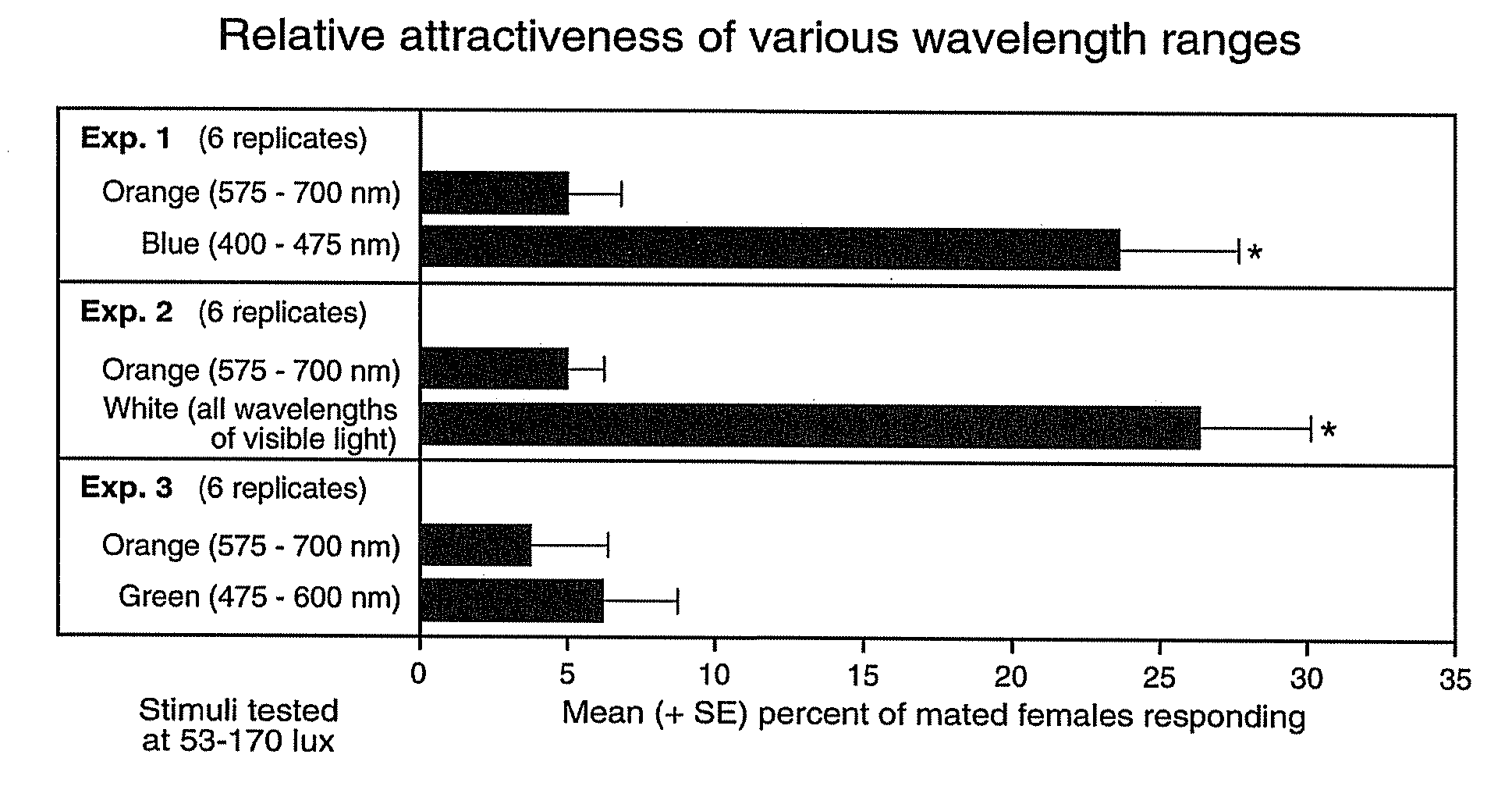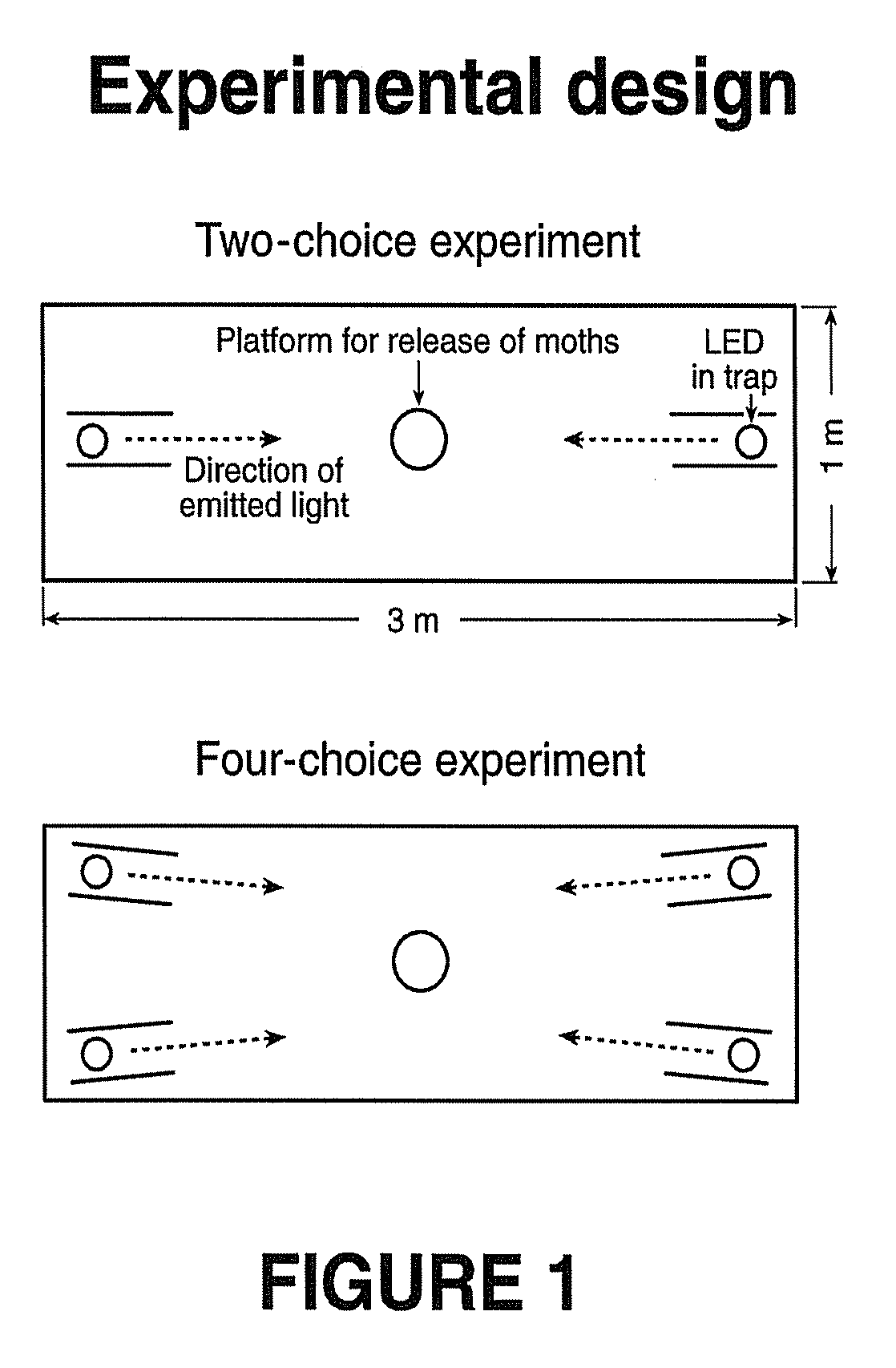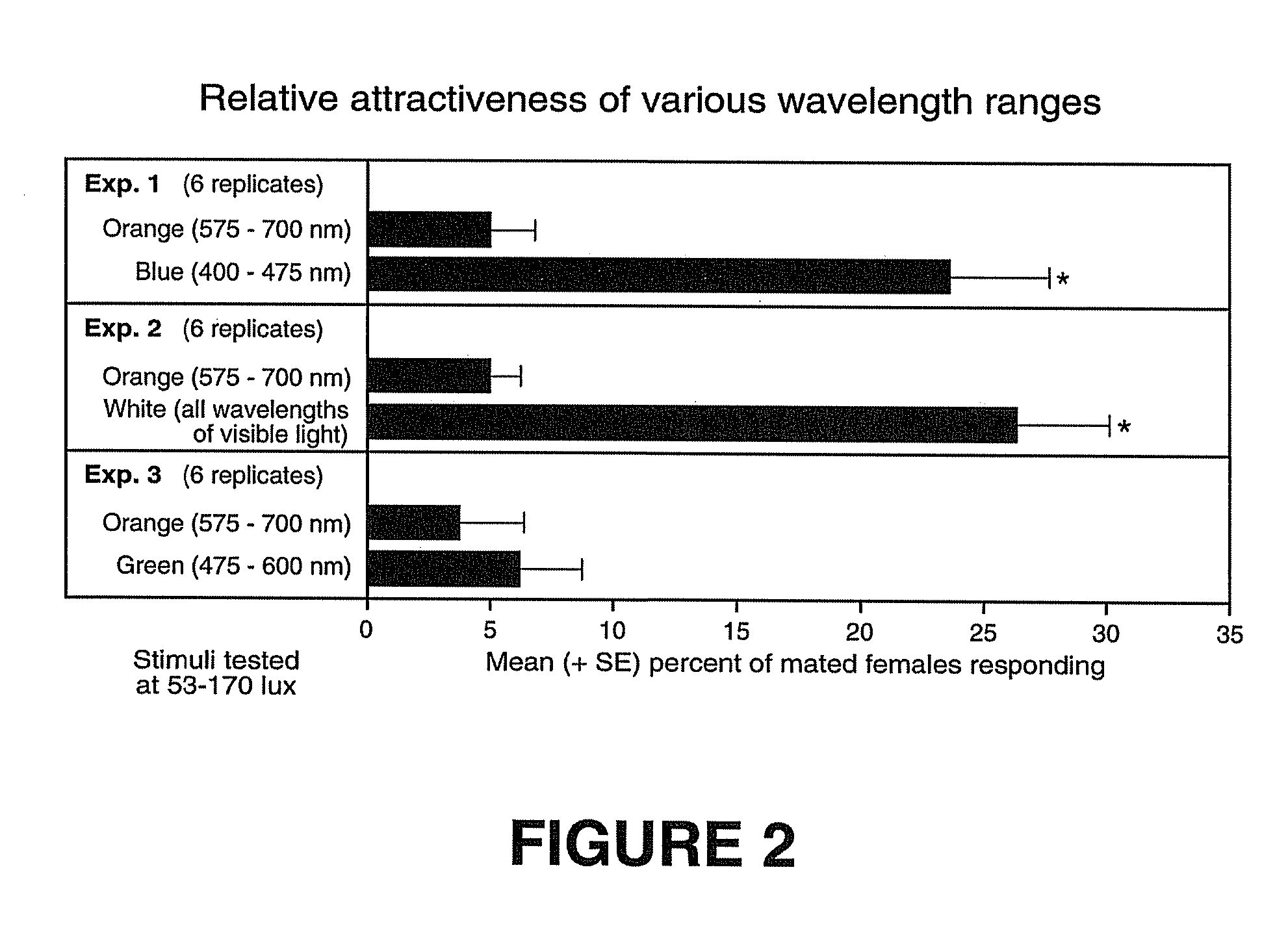Apparatus and Method for Emitting Specific Wavelengths of Visible Light to Manipulate the Behavior of Stored Product Insect Pests
a technology of specific wavelengths and visible light, which is applied in the field of apparatus and methods for manipulating the behavior of stored product insect pests, can solve the problems of not using enough attraction of just synthetic sex pheromones for imm control, the biology and management of the imm fails to list a single reference on the use of light in sampling or manipulating the behavior of imm populations
- Summary
- Abstract
- Description
- Claims
- Application Information
AI Technical Summary
Benefits of technology
Problems solved by technology
Method used
Image
Examples
experiment 10
Attractiveness of Specific Wavelengths in the Blue Light Spectrum (400-475 nm) Each Tested at a Light Intensity of 200 lux
[0047]To determine the wavelength in the blue light spectrum (400-475 nm) most effective in attracting mated female IMMs, Light-Emitting-Diodes (LED; Roithner Lasertechnik, Vienna, Austria) with peak wavelengths of 405 nm (range: 400-410 nm), 435 nm (range: 410-470 nm), 450 nm (range: 440-460 nm) and 470 nm (range: 465-475 nm) were tested in four-choice Experiment 10. For each replicate, one of the four LEDs was randomly assigned to, and mounted within, one of four Green Delta Traps (see general experimental design; FIG. 1), using a resistor to adjust the intensity of each LED to 200 lux.
[0048]In Experiment 10, it was found that the LED with peak wavelength 405 nm was significantly more effective than LEDs with peak wavelength 435 nm, 450 nm or 470 nm in attracting gravid female IMMs. The latter three peak wavelengths were equally unattractive to female moths (se...
experiment 11
Attractiveness of Specific Wavelengths in the Blue-Light Spectrum (400-475 nm) Each Tested at a Light Intensity of 200 μW Per 1 cm2
[0050]To further determine the wavelength in the blue light spectrum most effective in attracting mated females, an additional four-choice experiment (Experiment 11) was conducted. The experimental design was identical to that of Experiment 10 except that the LEDs were calibrated to emit 200 μW per 1 cm2, integrated from 350-550 nm using a HR4000 high-resolution spectrometer (Ocean Optics Dunedin Fla.).
[0051]In Experiment 11, it was found that the LED with peak wavelength 405 nm was significantly more effective in attracting gravid females than were LEDs with peak wavelength 435 nm, 450 nm or 470 nm. The latter three peak wavelengths were equally unattractive to female moths (FIG. 6).
[0052]FIG. 6 illustrates graphical data of mated female Indian meal moths responding in still-air, four-choice laboratory Experiment 11 to specific wavelengths (405, 435, 4...
experiment 15-17
Attractiveness of Specific Wavelengths in the Green-Light Spectrum (505-572 nm) Each Tested at a Light Intensity of 30 μW Per 1 Cm2
[0056]Considering that green light (475-600 nm) was somewhat attractive (although not statistically significant) to males, virgin females and mated females in Experiments 4-6 (see FIG. 3), and that attraction of IMM to green light is reported in the literature (Stermer 1959; Soderstrom 1970; Kirkpatric and Marzke 1970), four-choice bioassays (Experiments 15-17) were designed to determine the specific wavelength(s) responsible for the attractiveness. Light-Emitting-Diodes (LED) with peak wavelengths of 505 nm, 525 nm, 565 nm or 572 nm (Roithner Lasertechnik, Vienna, Austria) were deployed to test the response of males (Experiment 15), virgin females (Experiment 16) and mated females (Experiment 17). For each replicate, one of the four LEDs was randomly assigned to, and mounted within, one of four Green Delta Traps (see general experimental design; FIG. 1...
PUM
 Login to View More
Login to View More Abstract
Description
Claims
Application Information
 Login to View More
Login to View More - R&D
- Intellectual Property
- Life Sciences
- Materials
- Tech Scout
- Unparalleled Data Quality
- Higher Quality Content
- 60% Fewer Hallucinations
Browse by: Latest US Patents, China's latest patents, Technical Efficacy Thesaurus, Application Domain, Technology Topic, Popular Technical Reports.
© 2025 PatSnap. All rights reserved.Legal|Privacy policy|Modern Slavery Act Transparency Statement|Sitemap|About US| Contact US: help@patsnap.com



